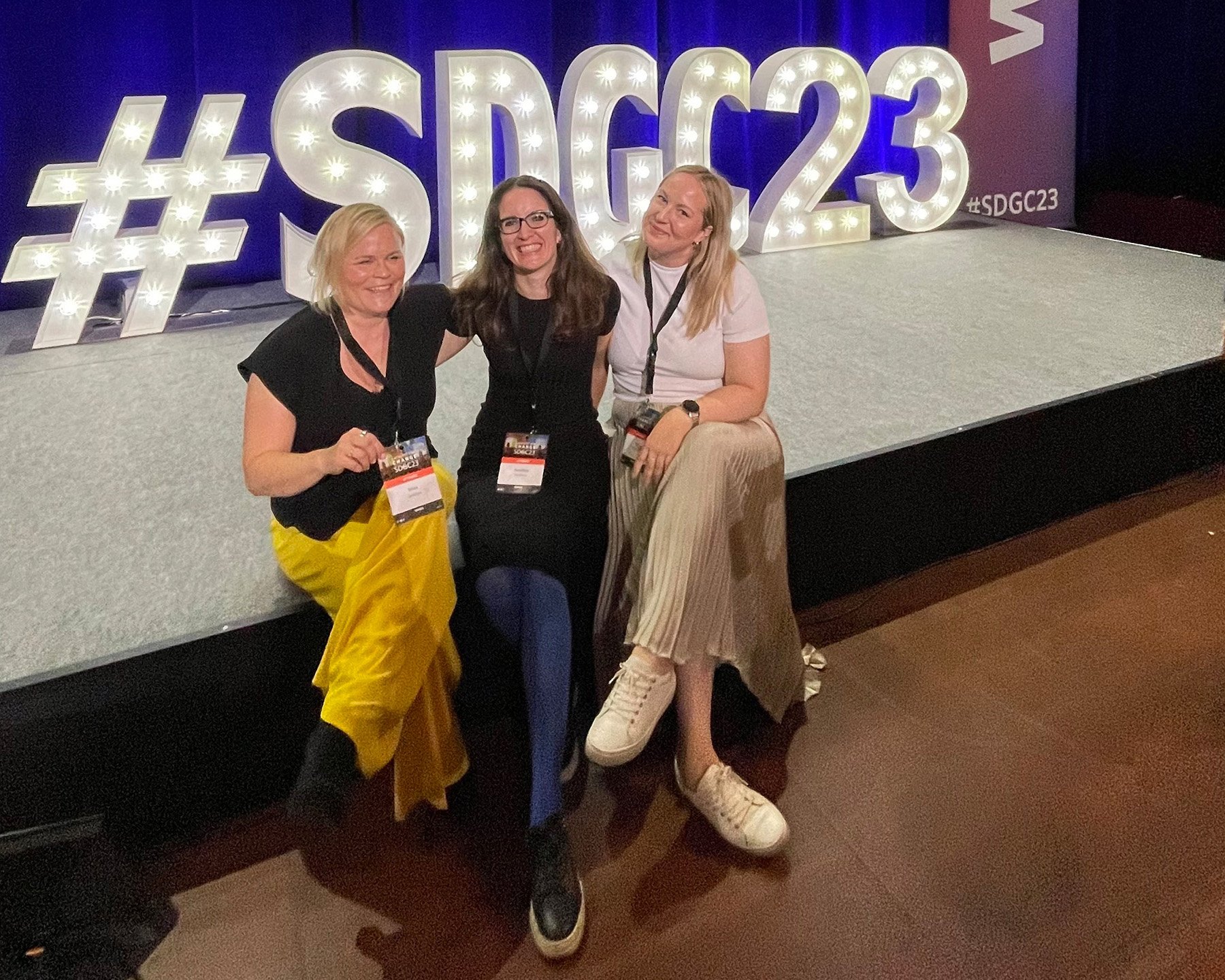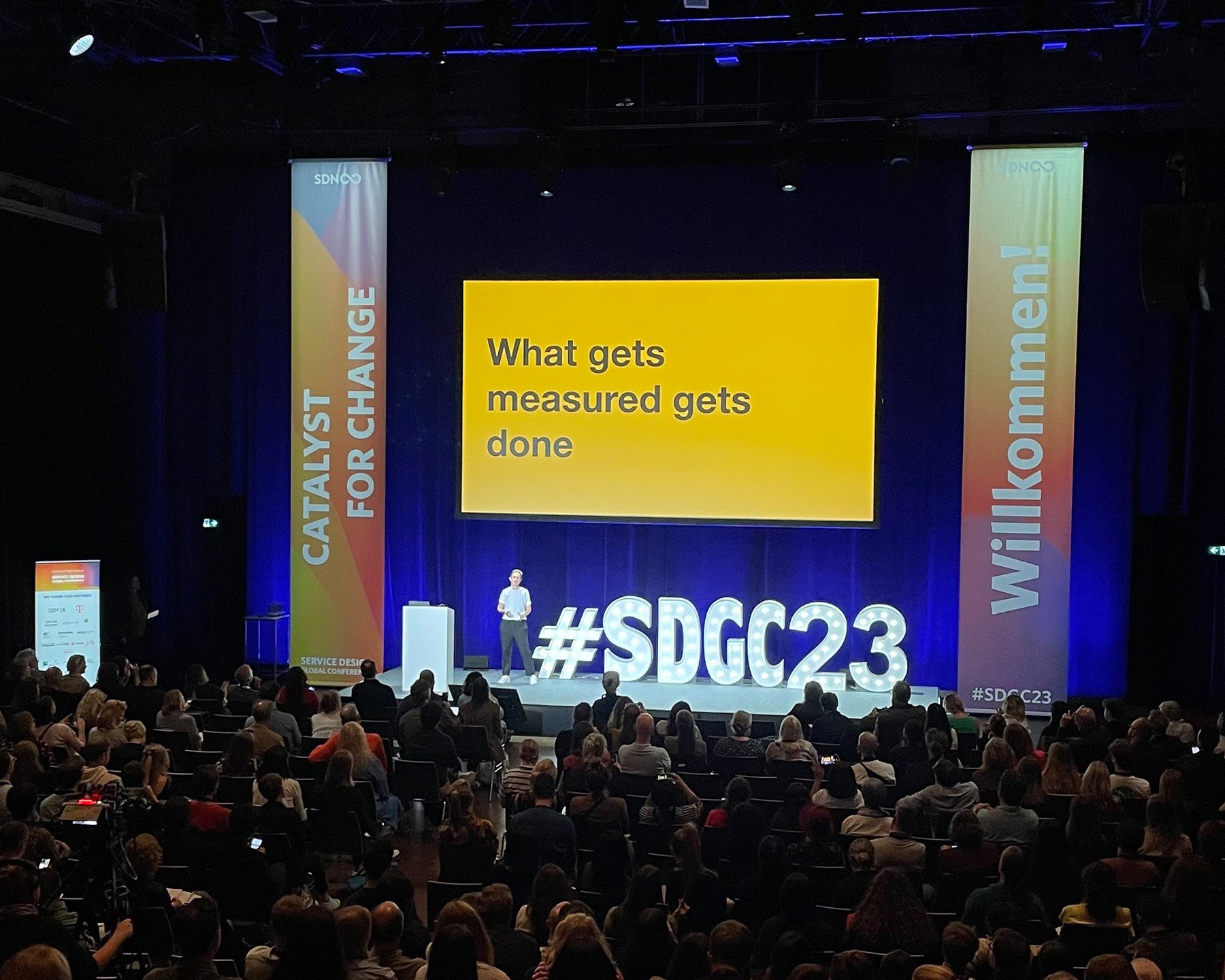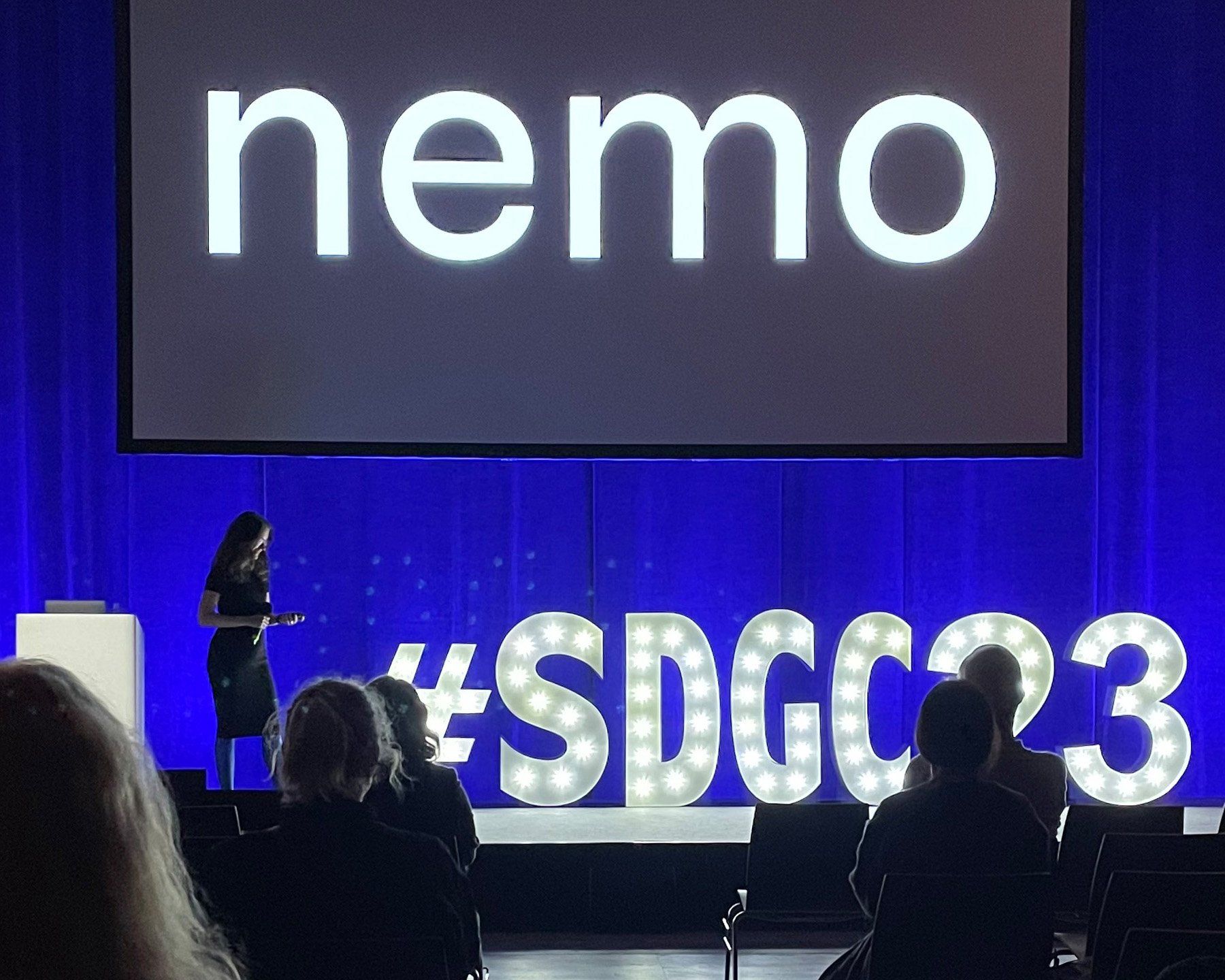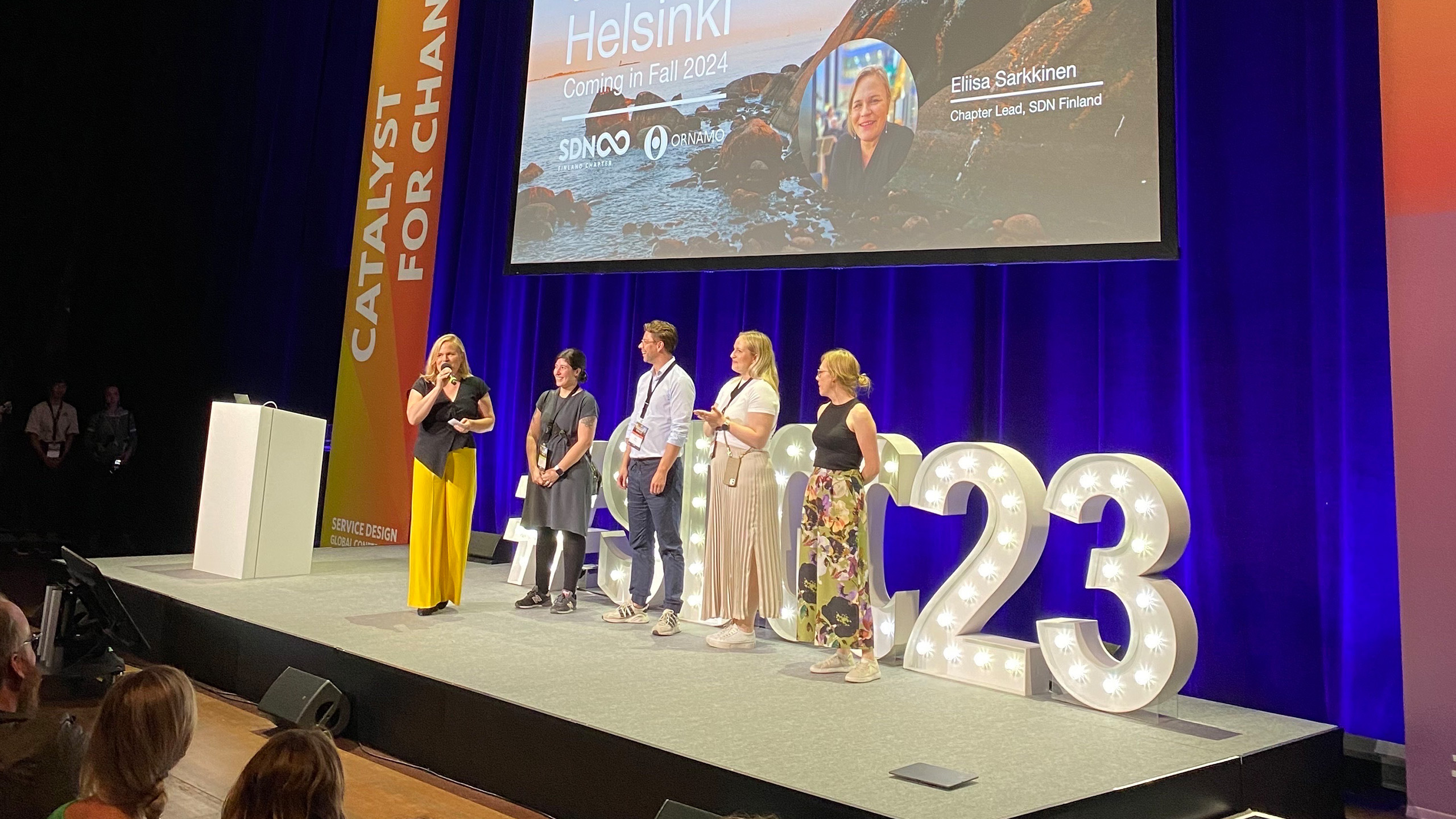Design Thinking // News // Maritime // Design Services
Contact Us → Contact Us →In the field of service design, it is important to stay ahead of the curve. In this blog post, we talk about Siili’s recent triumph at the SDN Awards, delve deep into the hot topics of service design and picked the key insights that struck us the most.
The room was full of ideas in Berlin when Aino Makkonen, Karoliina Tiuraniemi, and Eliisa Sarkkinen, three of Siili’s service designers, joined the gathering of 950 participants at the Service Design Global Conference (SDGC) 2023. Besides hoping to stay at the cutting edge of service design, the team represented Siili at the conference, organized by Service Design Network, to take home the first prize in the SDN Awards for Siili’s project Nemo.
The theme of the conference was 'Catalyst for Change,' that aptly mirrors the rapid transformations in our world. The theme was reflected in the over 40 keynote speeches given by industry experts.
“What we learned is that time of simplifying things is merely over. We need complexity to address the myriad of needs, stay ahead of the curve and embrace the change”, says Aino Makkonen, Service and Business Designer.

Eliisa Sarkkinen (left), Karoliina Tiuraniemi and Aino Makkonen
The 5 key insights from SDNC 2023
The big issue, related to the theme of the conference, was to find ways to navigate through the technological and environmental shifts that are changing the way we live and work. The theme was addressed from many angles, from transforming industry and reshaping consumer demands. Can service design accelerate and enhance this transformation? Absolutely, but this era of change requires service designers to consistently challenge their approach to innovation and leadership.
As the team delved deep into the pressing issues of service design, it was only fair to curate a selection of enduring themes and ideas that truly stuck.
1. Collaboration serves the community
At the conference, a prominent theme revolved around inclusivity. Discussions highlighted the common tendency of service design to favor Western contexts, emphasizing the necessity to adapt to diverse cultural backgrounds. A key insight emerged: service designers must acknowledge the significance of inclusivity and engage in collaborative efforts with the communities they serve.
For instance, Karoliina Tiuraniemi, Lead Business Designer, remarks, “The Nemo project is a prime illustration of how multiple stakeholders were involved in the design process, ensuring an outcome fitting to the complex context”
“We need complexity to address the myriad of needs, stay ahead of the curve and embrace the change.”
2. AI as the accelerator, human as the ruler
The conference highlighted the increasing integration of AI into service design, but it underscored the irreplaceable value of real human empathy. The recipe for getting deeper insights, hence, is understanding the underlying motives behind events and objects – and this requires the human brain.
“We witnessed the results of thorough research where AI methodologies enhanced productivity across 15 stages of the design process, a truly awe-inspiring feat. However, we must never overlook the indispensable role of human empathy. Our responsibility is to ensure that this thrives in a data-driven world where categorization is often necessary,” says Karoliina Tiuraniemi.
This is how it’s done, in short:
- 1. Enhance your AI proficiency.
- 2. Build a reputation for rapid, ethical, and empathetic content curation.
- 3. Transform your workflows by incorporating AI.
-
3. Use the window for longevity
Service design projects in the public sector often have a longer lifecycle, demanding careful planning and budget and decision-making management – seizing the windows of opportunity when possible. Our Nemo project, here too, is a good example of change management and co-creation with the intention to design for longevity, creating a national single window and addressing the complex needs of the maritime sector in Finland.
“Ours was not the only project working with a complex ecosystem of stakeholders and commencing the work by shaping the future 10 years from now. Also, the UK Ministry of Justice, the winner of the professional non-profit category, aimed to establish a clear long-term 2030 vision for resettlement from prison into the community”, remarks Karoliina Tiuraniemi.
4. Complexity is the new simplicity
Design and designers have long traditions in trying to simplify our complex world into more comprehensible and actionable pieces. However, it was argued that it is no longer enough to simplify, but everyone actually needs to be prepared and skilled enough to deal with the reality that consists of complex systems, complex changes, complex behavior and complex problems. The danger of oversimplification is that it can lead to the exclusion of many minor yet critical stakeholders and issues from the larger system.
“The small but important notion for me was that instead of designing for simplicity, we actually need to start designing on purpose for complexity”, says Aino Makkonen.
5. Metrics matter
Measuring success plays an increasingly vital role in an era where the only constant is change. The significance of co-creation extends to the development of appropriate metrics, which should be collaboratively designed to align with the values and strategies of all involved. In the end, what you measure is what you will get, so it is utmost importance to measure the outcome instead of particular tasks.
Lead Service Designer Eliisa Sarkkinen suggests, “We should make metrics our North Star, preferably focusing on clear, primary metrics that can be further broken down into more specific ones.”

Bringing home the award and hosting next year’s conference
In addition to gaining insights, Siili was also at the conference to receive the prestigious Service Design Award presented by the Service Design Network (SDN). The Nemo project was awarded in the Professional Commercial category, and is, simply put, set to revolutionize Finland's maritime sector. That’s right, thanks to its applications set to drastically improve the productivity and competitiveness of the nation as well as addressing industry needs. The comments gathered during the conference, also, speak volumes about the impact of Nemo:
“What made Nemo stand out was its exceptional stakeholder participation, innovative visualization of complex information, and its significant impact on multiple participants. This recognition reaffirms Siili's position at the forefront of service design”, says Karoliina Tiuraniemi.
“The Nemo project is a prime illustration of how multiple stakeholders were involved in the design process, ensuring a more inclusive outcome.”

The excellence in service design extends beyond Siili to encompass Finland as a whole. Thanks to years of networking and establishing a strong presence in the service design community, Helsinki is set to host the SDGC conference next year.
“Finland is renowned for its quality service design education, and hosting this conference will boost the nation's standing in the sector”, Aino Makkonen enthuses. “Our team of 15 service design professionals reflect our professionalism, especially given the field's relatively short history of just over 15 years”, Eliisa Sarkkinen adds.
With minds brimming with fresh ideas, Siili’s designer team eagerly anticipates translating them into actions and recharging for the conference in Finland next year.
